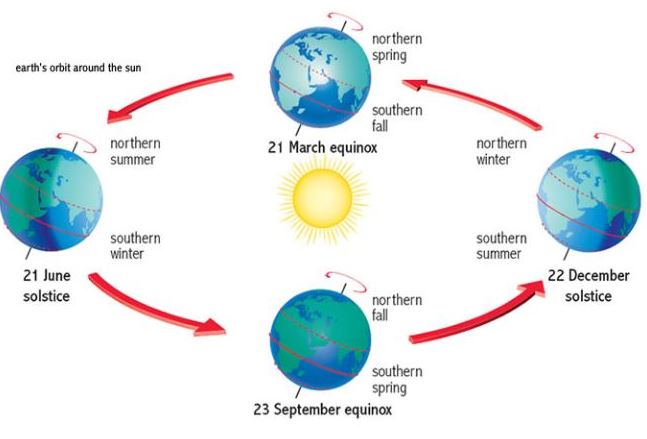Note4Students
From UPSC perspective, the following things are important :
Prelims level: Rotation and Revolution of Earth
Mains level: NA

The summer solstice will happen today around 9:02 am on Monday (Indian Standard Time).
What is Summer Solstice?
- Solstice means “sun stands still” in Latin.
- The longest day of 2021 for those living north of the Equator is June 21.
- This day is characterized by a greater amount of energy received from the sun.
- In technical terms, this day is referred to as the summer solstice, the longest day of the summer season. It occurs when the sun is directly over the Tropic of Cancer, or more specifically right over 23.5-degree north latitude.
The Southern Hemisphere receives most sunlight on December 21, 22 or 23 when the northern hemisphere has its longest nights– or the winter solstice.
Why do we have summer solstice?
- Since Earth rotates on its axis, the Northern Hemisphere gets more direct sunlight between March and September over the course of a day.
- This also means people living in the Northern Hemisphere experience summer during this time.
- The rest of the year, the Southern Hemisphere gets more sunlight.
- During the solstice, the Earth’s axis — around which the planet spins, completing one turn each day — is tilted in a way that the North Pole is tipped towards the sun and the South Pole is away from it.
Answer this PYQ in the comment box:
Q.On 21st June, the Sun (CSP 2019):
(a) Does not set below the horizon at the Arctic Circle
(b) Does not set below the horizon at Antarctic Circle
(c) Shines vertically overhead at noon on the Equator
(d) Shines vertically overhead at the Tropic of Capricorn
Some other facts
- Summer solstice does not mean the earliest sunrise or latest sunset.
- Although June 21 will be the longest day in 2021, it does not necessarily mean that it brings the earliest sunrise or latest sunset.
- It depends on the latitudinal location of the country.
Get an IAS/IPS ranker as your 1: 1 personal mentor for UPSC 2024
